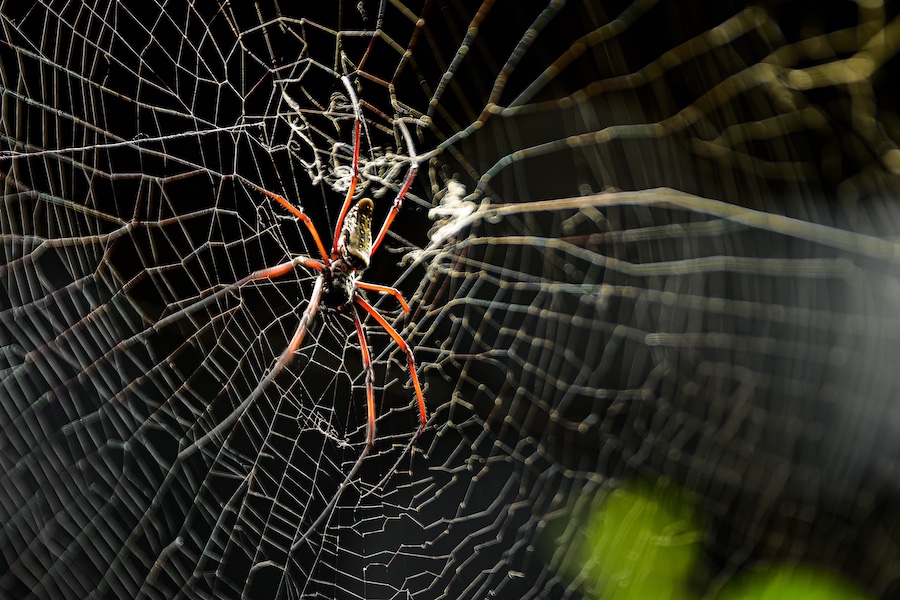
It was a bit of a provocation from me. I let people vote on Twitter on whether to release nephilas in the jungle in our new gorilla house – The Dja Reserve. What an idea! Although the voting ended in a tie, otherwise reasonable people were writing angry posts in the discussion about toxicity of these spiders or neurotoxicity of their nets. Both are true, however the level of danger should be related to the insect, not to mammals of human size. I once spent a calm night in Cameroon with a nephila roly-poly, during which my companion didn’t move away from the door frame.
In the zoo you don’t have to be afraid. The nephilas (the golden orb-weaver spiders), namely the red-legged golden orb-weaver spiders (Trichonephila inaurata), are in the Dja Reserve safely locked in one of the vivaria. However, the stormy reaction was on my mind. Lots of people are afraid of spiders, but this was beyond my previous experience. Only after some time did I figure out why. There was a comics, Pavouk Nephila (Nephila, the Spider), published in 1970s in the magazine Ohníček, which had been characterized on one of the fans’ websites in this way: “A giant, extremely dangerous spider, of the size of a car, capable of holding a trolleybus in its legs, with fangs as long as sabres enabling it to cut a human’s head off in a second? Yes!” Well… if I read this before my night with the roly-poly, perhaps I would have gone to sleep somewhere else. And I am not mentioning the impressive illustrations of Nephila by the later Oscar winner for costumes for the film Amadeus, Theodor Pištěk.
By the way, in the plot of the comics the effort to get large volumes of spider silk plays an important role. The same effort, however, exists for decades in the real world and nephilas are one of the groups of spiders, which are in the centre of interest in this regard. After all, do you know why “our” nephila from the Dja Reserve is called golden orb-weaver spider? Because it spins golden webs. Even an entire cape has been made from very similar Madagascar golden orb-web spider silk. Dozens of people worked on it, and they used fibres from one million of nephilas. The cape is beautiful; however, I did not understand the purpose of it. On the other hand, I understand very well the efforts to get spider silk in a large amount. It surpasses steel by some of its mechanical properties, Kevlar by others, and in the combination of these various properties it is simply unbeatable. Unfortunately, spiders, unlike the silkworm caterpillars, which just calmly chew the mulberry leaves, can’t be bred on a mass scale. They would eat each other. Therefore, other ways to get their silk are explored. Especially through genetical engineering, which has come into play recently. The relevant spider genes are inserted by researchers into various organisms, starting with bacteria, tobacco plants, and silkworms, and ending with goats…
Well, I started thinking about what today’s version of Nephila, the Spider would look like. Maybe it is better not to think… Anyway, you definitely don’t have to be afraid of the nephilas in the vivarium of our Prague Dja Reserve.

